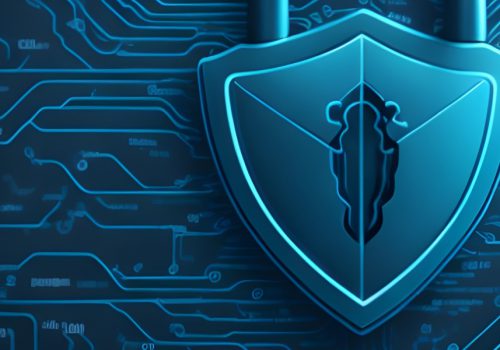In today’s interconnected business environment, organizations face an expanding array of operational risks that threaten their ability to deliver products and services. From cyber-attacks and data breaches to supply chain disruptions and regulatory changes, the complexity and velocity of risks continue to increase. Operational resilience, the ability to adapt, respond, and continue critical operations through disruptions, has become a strategic imperative rather than a mere technical consideration.
Two internationally recognized frameworks offer complementary approaches to building this resilience: ISO/IEC 27001 for information security management and ISO 31000 for enterprise risk management. While organizations often implement these standards separately, their integration creates a powerful foundation for comprehensive operational resilience. In this article we’ll delve into how organizations can strategically combine these frameworks to strengthen their risk posture and operational continuity.
Understanding the Standards
ISO/IEC 27001: Information Security Management Systems
ISO/IEC 27001 provides a systematic approach to managing sensitive information and ensuring its confidentiality, integrity, and availability. At its core is the establishment of an Information Security Management System (ISMS) that:
- Identifies information assets and their value to the organization
- Assesses risks to those assets using a documented methodology
- Implements appropriate controls to mitigate identified risks
- Continuously monitors, reviews, and improves the effectiveness of controls
- Embeds a cycle of Plan-Do-Check-Act for ongoing management
The standard requires organizations to develop a comprehensive framework of policies, procedures, and controls addressing areas ranging from access management and cryptography to business continuity and supplier relationships.
ISO 31000: Risk Management Principles and Guidelines
ISO 31000 provides a broader framework for enterprise risk management applicable across all organizational contexts. This standard:
- Establishes principles for effective risk management
- Provides a framework for integrating risk management into organizational processes
- Outlines a structured process for identifying, analyzing, evaluating, and treating risks
- Emphasizes the importance of communication, consultation, and continuous improvement
- Promotes risk-based decision-making as an integral part of governance
Unlike ISO/IEC 27001, ISO 31000 is not a certification standard but rather a set of guidelines that can be adapted to any organization regardless of size, sector, or maturity.

The Case for Integration
Complementary Strengths
ISO/IEC 27001 and ISO 31000 naturally complement each other. While ISO/IEC 27001 provides specific requirements and controls for information security, ISO 31000 offers a broader methodological approach to managing risks of all types. The integration leverages:
- Scope Enhancement: ISO 31000’s broader risk perspective expands ISO/IEC 27001’s information security focus to encompass operational, strategic, financial, and compliance risks.
- Methodological Rigor: ISO/IEC 27001’s structured approach to risk assessment adds specificity to ISO 31000’s more flexible guidelines.
- Resource Optimization: A unified approach eliminates duplicative risk assessment processes, streamlines documentation, and reduces compliance overhead.
- Decision Alignment: Integration ensures that information security decisions align with enterprise risk appetite and overall business objectives.
Building Blocks of Operational Resilience
When combined effectively, these frameworks establish the foundation for operational resilience by addressing:
- Comprehensive Risk Visibility: Identifying interconnected risks that might otherwise go unnoticed in siloed approaches
- Proportionate Controls: Implementing measures that are appropriate to both the severity of risk and business value
- Adaptive Response: Creating mechanisms that can evolve as threats and operational environments change
- Incident Management: Establishing robust processes for detecting, responding to, and recovering from disruptions
- Continuous Improvement: Embedding learning cycles that strengthen resilience over time
Integration Framework: A Practical Approach
1. Establish Unified Governance
The integration journey begins with governance alignment:
- Consolidated Leadership: Form a cross-functional steering committee with representation from information security, risk management, operations, and executive leadership.
- Harmonized Policies: Develop an overarching risk management policy that references both standards and defines their relationship.
- Integrated Reporting: Establish common metrics and reporting mechanisms that provide a comprehensive view of the organization’s risk landscape.
Coherent Risk Appetite: Define a unified risk appetite statement that addresses both information security and broader operational risks.
2. Align Risk Assessment Methodologies
A cornerstone of successful integration is a unified approach to risk assessment:
- Common Risk Taxonomy: Develop a shared language and classification system for risks, ensuring consistency across all assessment processes.
- Unified Assessment Process: Create a single risk assessment methodology that satisfies both standards while eliminating redundancies.
- Consistent Risk Criteria: Establish evaluation criteria that allow for comparison of different risk types on a common scale.
Contextualized Analysis: Ensure risk assessments consider the specific operational context and the broader business environment.
3. Implement Integrated Controls
Rather than maintaining separate control frameworks, develop a unified approach:
- Control Mapping: Map ISO/IEC 27001 Annex A controls to broader operational controls addressing other risk categories.
- Control Rationalization: Eliminate redundant controls and consolidate those addressing similar risks across different domains.
- Defense-in-Depth: Design layered controls that protect critical operations from multiple risk vectors simultaneously.
Technology Enablement: Leverage governance, risk, and compliance (GRC) platforms that can track controls across multiple frameworks.
4. Develop Unified Resilience Plans
Operational resilience requires coordinated response and continuity planning:
- Scenario-Based Planning: Develop response scenarios that address complex, interconnected disruptions rather than isolated incidents.
- Integrated Response Teams: Form cross-functional teams trained to address both information security and operational disruptions.
- Recovery Prioritization: Establish clear priorities for service restoration based on business impact analysis.
Regular Testing: Conduct exercises that test the organization’s ability to maintain critical operations through various disruption scenarios.
5. Establish Continuous Improvement Cycles
Sustainable resilience requires ongoing evolution:
- Unified Audit Program: Develop an integrated audit approach that assesses compliance with both standards simultaneously.
- Incident Analysis: Thoroughly analyze disruptions to identify lessons that strengthen both information security and operational controls.
- External Intelligence: Incorporate threat intelligence and industry benchmarking into the improvement process.
Maturity Assessment: Regularly evaluate the maturity of both risk management and information security practices against established models.

Implementation Challenges and Solutions
Cultural Resistance
One of the most significant barriers to integration is cultural resistance from teams accustomed to working within siloed frameworks.
Solutions:
- Develop a clear narrative explaining the business benefits of integration
- Conduct joint workshops between information security and risk management teams
- Create shared objectives and performance metrics that encourage collaboration
- Celebrate early integration successes to build momentum
Process Complexity
Integrating two comprehensive frameworks can create procedural complexity that undermines effectiveness.
Solutions:
- Start with high-level alignment before addressing detailed procedures
- Adopt a phased implementation approach focusing on high-value integration points
- Use visualization techniques to clarify integrated processes
- Regularly review and simplify procedures based on user feedback
Compliance Concerns
Organizations with existing certifications may worry about maintaining compliance during integration.
Solutions:
- Create comprehensive traceability matrices showing how integrated approaches satisfy both standards
- Engage certification bodies early to discuss the integration approach
- Consider conducting gap assessments before full integration
- Maintain separate documentation where required for certification purposes
Resource Limitations
Integration initiatives often compete with other priorities for limited resources.
Solutions:
- Articulate clear ROI calculations for the integration effort
- Leverage existing governance meetings rather than creating additional forums
- Use technology to automate integration points where possible
- Consider external expertise to accelerate the process
Case Study: Financial Services Integration
A mid-sized financial services organization successfully integrated ISO/IEC 27001 and ISO 31000 to enhance operational resilience. The institution had maintained separate information security and risk management functions, resulting in duplicative efforts and inconsistent risk assessments.
Their approach included:
- Unified Risk Registry: Creating a single risk register capturing both information security and operational risks, with consistent evaluation criteria and ownership.
- Integrated Governance: Establishing a quarterly Risk and Security Committee that brought together previously separate governance forums.
- Technology Enablement: Implementing a GRC platform that supported both standards and provided integrated reporting.
- Training Alignment: Developing cross-training programs ensuring that risk and security professionals understood both domains.
The results were significant: a 30% reduction in risk assessment efforts, improved visibility of interconnected risks, more efficient audit processes, and enhanced resilience during a major supply chain disruption when integrated response teams worked seamlessly together.

Conclusion
As operational environments grow increasingly complex, organizations cannot afford fragmented approaches to risk management and resilience. The strategic integration of ISO/IEC 27001 and ISO 31000 provides a comprehensive framework that strengthens an organization’s ability to anticipate, prevent, respond to, and recover from disruptions.
This integration is not merely a technical exercise but a strategic initiative that enhances decision-making, optimizes resource allocation, and ultimately builds sustainable operational resilience. Organizations that successfully bridge these frameworks gain not only more efficient compliance processes but also a genuine competitive advantage in volatile business environments.
The journey toward integration may present challenges, but the resulting operational resilience, the ability to deliver critical services through disruption, provides compelling justification for the effort. As threats continue to evolve in both complexity and impact, integrated risk management becomes not merely a best practice but an operational necessity.









